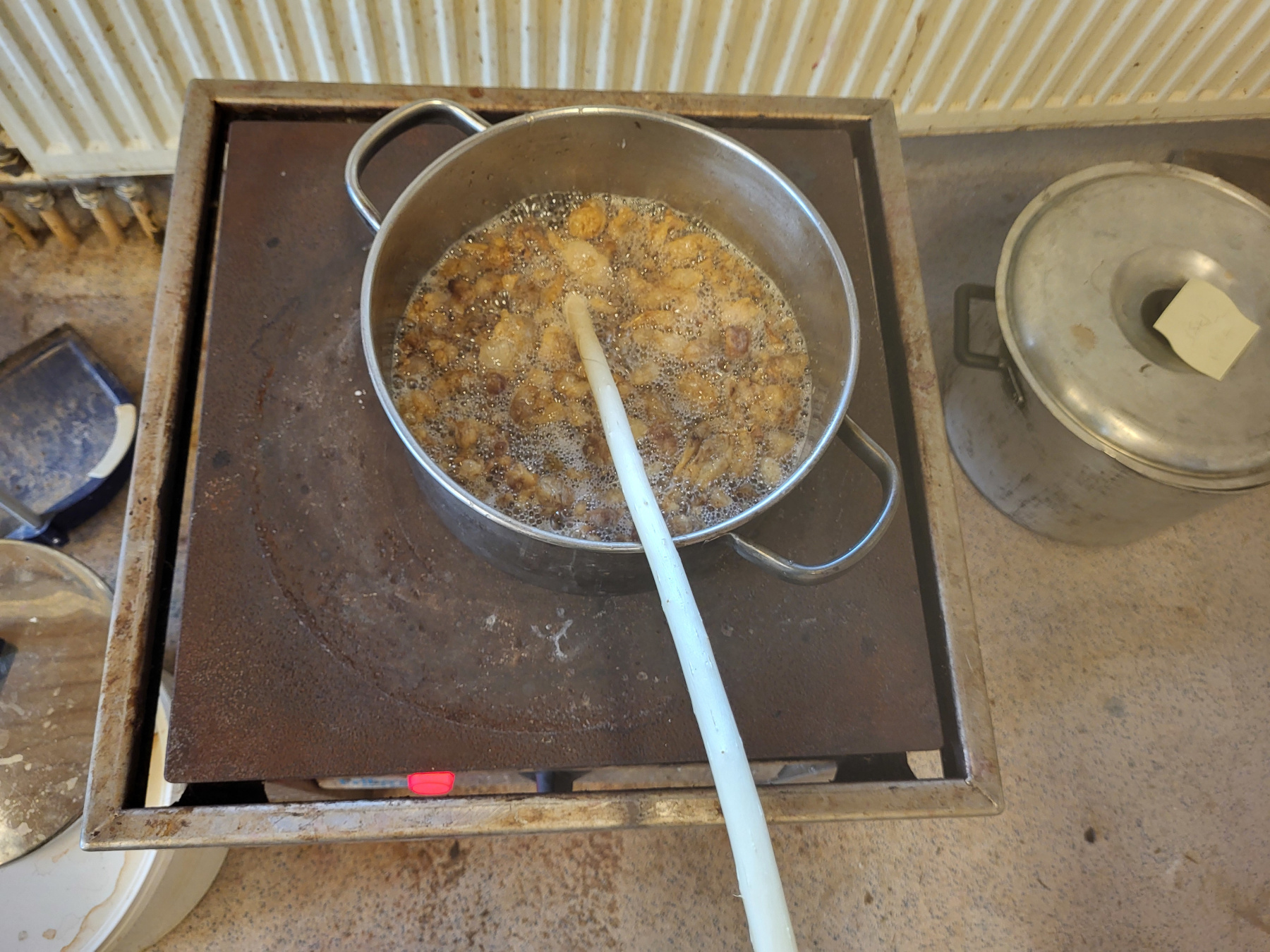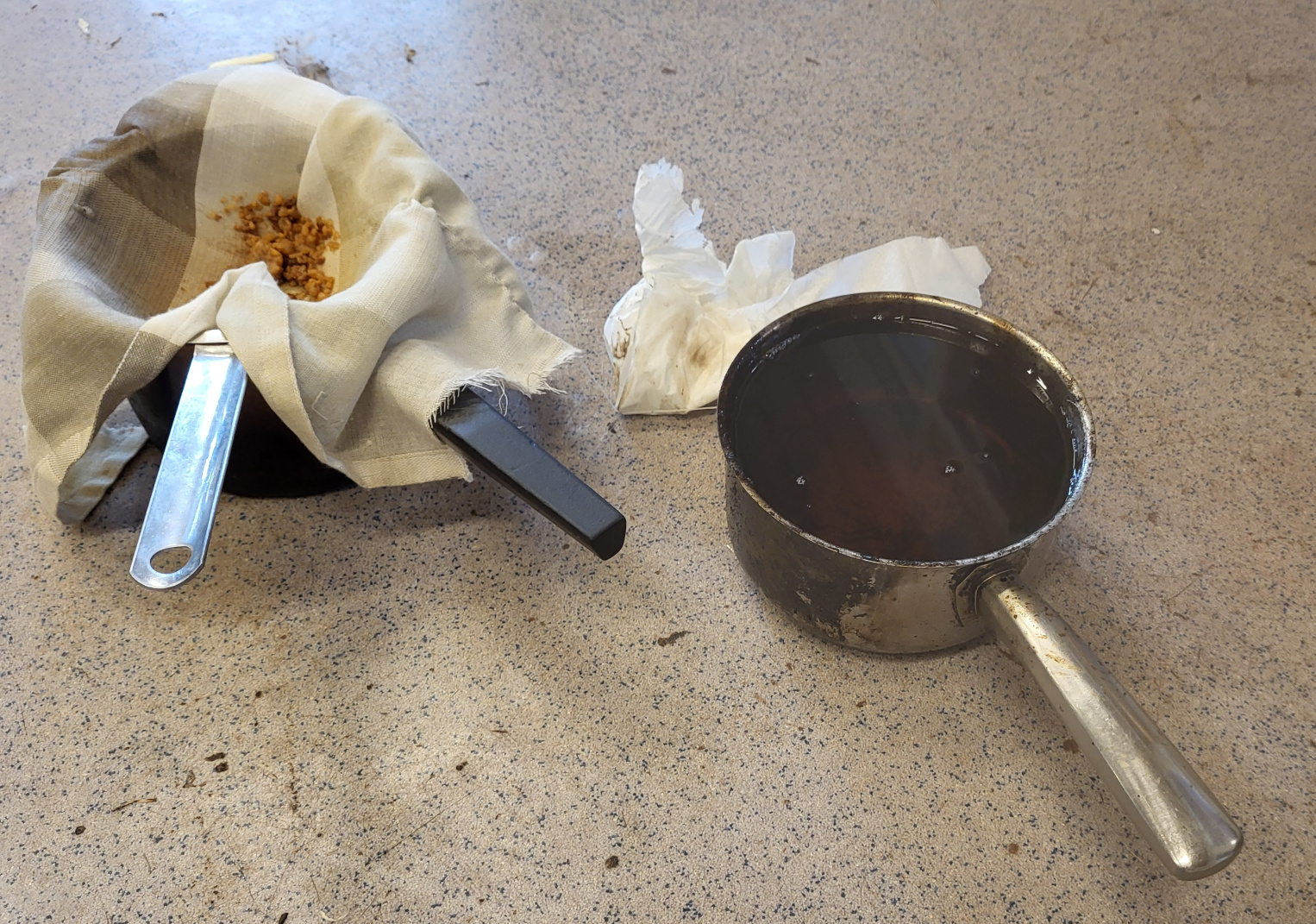Making water proof shoe polish
Published on May 22, 2025 by Impaktor.
1. Introduction
A short description of how to make your traditional own shoe polish, to water proof leather and also to soften it.
Ingredients:
- Animal fat (enough to fill a pot)
- Bee’s wax (about what fits in one hand)
- Cooking Oil (about half as much as the wax)
- Tar (a few table spoons)
Proportions depend on preferences for color and consistency.
2. Recipe
- We fill a pot with lard, or more specifically: fat from intestines, as this is thicker giving a more firm consistency of the finished product. This is a left-over product from butcheries and can be bought at the same time as buying e.g. sheep skin for my tannery-project.

- We boil out the fat for about one hour, in a pot with some water. Smells like bacon to some, smells like grim death to others. We boil off the water, leaving only fat, and the now shriveled up tissue.

- We separate out the fat, and do a “tea spoon test”, in that we let it cool, to test its consistency at room temperature

- We add a few table spoons of tar (swe: tjära) from birch (swe:
björknäver), but pine tree tar works well. (However, some
tarare better for tape archives). This is done to act as a conservation agent for the fat, and in addition it darkens the color and water proofs the leather. - We add bees wax for making it firmer, and improved water proofing the leather when applying the finished result to it.
- We add food grade oil (e.g. olive) to make it softer, to be able to apply it easier.
- Pour it into suitable sized containers, and let it cool

3. Making Birch tar
The tar is made by filling a metal jar with birch bark, and make a hole in the bottom, while heating the jar up, by burning wood around it, for roughly half an hour up to several hours. Place a glass jar underneath to collect the tar.
Typically we can dig a hole and bury the glass jar underneath the ground, and put the metal jar and fire on top.
4. Epilogue
The left over fat-tissue was called “Grevar” in Swedish (eng: Counts), and were typically given to the poorest family that did not have any animals to slaughter, so that they could make another batch from the village’s left over.
